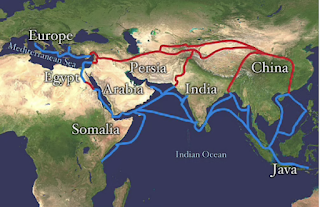Dry Powder and The Nascent Art market
 |
| Artwork original and print by Eiman Muiny |
In general, when we talk about a nascent market, it means we are talking about a newly created business model either for a new products or services or technologies that could change or create new industries.
As an individual artist I would like to discuss this matter from my own perspective and I want to talk about business in the life of artists. I have read few books and some PDF files and few art reports, and I found that, the majority of them talk about the big picture including business managements and analyzing sales and finding the true profits and the ups and downs of the art market through the years.
Museums, big galleries ( 50+ employees) , auction houses, exhibitions world wide, are all fall inside the definition of macroeconomic, which controlled by governmental concerns, and the implication of fiscal policy, economic growth and foreign and internal trade, involving big financial institutions that manage and support different firms, and industries inside the artworld.
Buying or selling or transmitting a piece of art and determining the validation and the valuation of it to set up a fair price, even if it’s too high, base on factors such as provenance, cultural value, condition, historical significance, publication and exhibition, the artist reputation, and sometimes the size. In another word, in order to consider a piece of art; it must exhibit certain cognitive and cultural meanings to determine the monetary value of it. Furthermore it, understanding the theory of the top 1 to 10% wealthy and the world’s unknown wealthy, those are the only people who’s active in this art market and they prefer to deal with blue ship artists who established a good reputation and their art values increase over time even during economic fluctuations. The majority of the art dealers and art collectors avoid to deal with low priced art, they dislike it and considering it of low quality art. In their opinion, high priced art reflects the weight of the artist and boosts confidence in his artistic career, therefore, this fact specifically influences and controls pricing policies within the the art world institutions.
Now, I want to talk about the market operations that function in the context of micro-economic level. Individual plays an essential role in shaping the market in term of determining the economic feasibility of their projects with little interference from the government’s legal legislation relevant to local markets transactions. Art depends on supply and demand based on the consumers behaviour, their financial status, average per capita income and more important, what’s in the trend.
You can call it commercial art market, most people at this level buy art for decorative purpose, what it means art became a kind of luxury items for this society class and not an essential for living.
Amazon, Etsy, Ikea and places like home goods retails supply, they all offer art for everybody and the social media play a big role in shaping this markets, by relocating people’s habits in the way they allocated their expenditure, and believe me people can spend a lot of time navigating and searching for the right piece for them.
Both whole sale and retail markets have been shaped by supply and demand and demographic distribution of interested buyers; in term of their taste and financial status.
This type of art doesn’t have the same value like the art I discussed in the macro-economics. No one in this circles cares about it, talks about it or considers it, it’s useless to them, but yet beautiful to be sold in cheaper prices online or over the shelves.
Here I should mention the Chinese art market, characterized by massive and diverse commercial productions, flooding the international and local market, with the cheapest price you can get, enough to supply big commercial, residential projects world wide.
It’s a great marketing idea, where you transform affordable yet beautiful art into must have decorative piece in every interior and the concept can be expanded to include a wide range of printing applications, such as wall paper, textiles for furniture and window coverings to accessories, literally on anything. It’s an entire industry incentivized to employ talented artists who may not have the opportunities to sell themselves in the primary market.
Printing allow artists with high qualification and unique productivity to sell copies of their artwork in a wider range market, instead of freezing and accumulating their original products due to it’s high price, which in the first place won’t be financially affordable to this type of social class!
There are plenty of artistic ideas out there, and the market accommodates all of them. Every piece of art has a potential buyer who sees it as a worthy investment. Generally, these ideas spread in the market at low costs, so a big budget isn't necessary to make them happen.
However, this article should cover another aspect of the nascent art market, "the dry powder". The dry powder is a slang term for a cash reserves kept on hand in case of emergency. Businessmen, business owners, industrialists, financial professionals and companies who are experts in their fields can estimate and make a clear decisions on how to allocate and invest some their cash in small art businesses. They are optimistic to the rise of these ventures. Economists predict that these type of businesses will boom, spreading across the streets of big and mid sized cities, in the form of small stores, especially following the closure of many large department stores.



Comments
Post a Comment